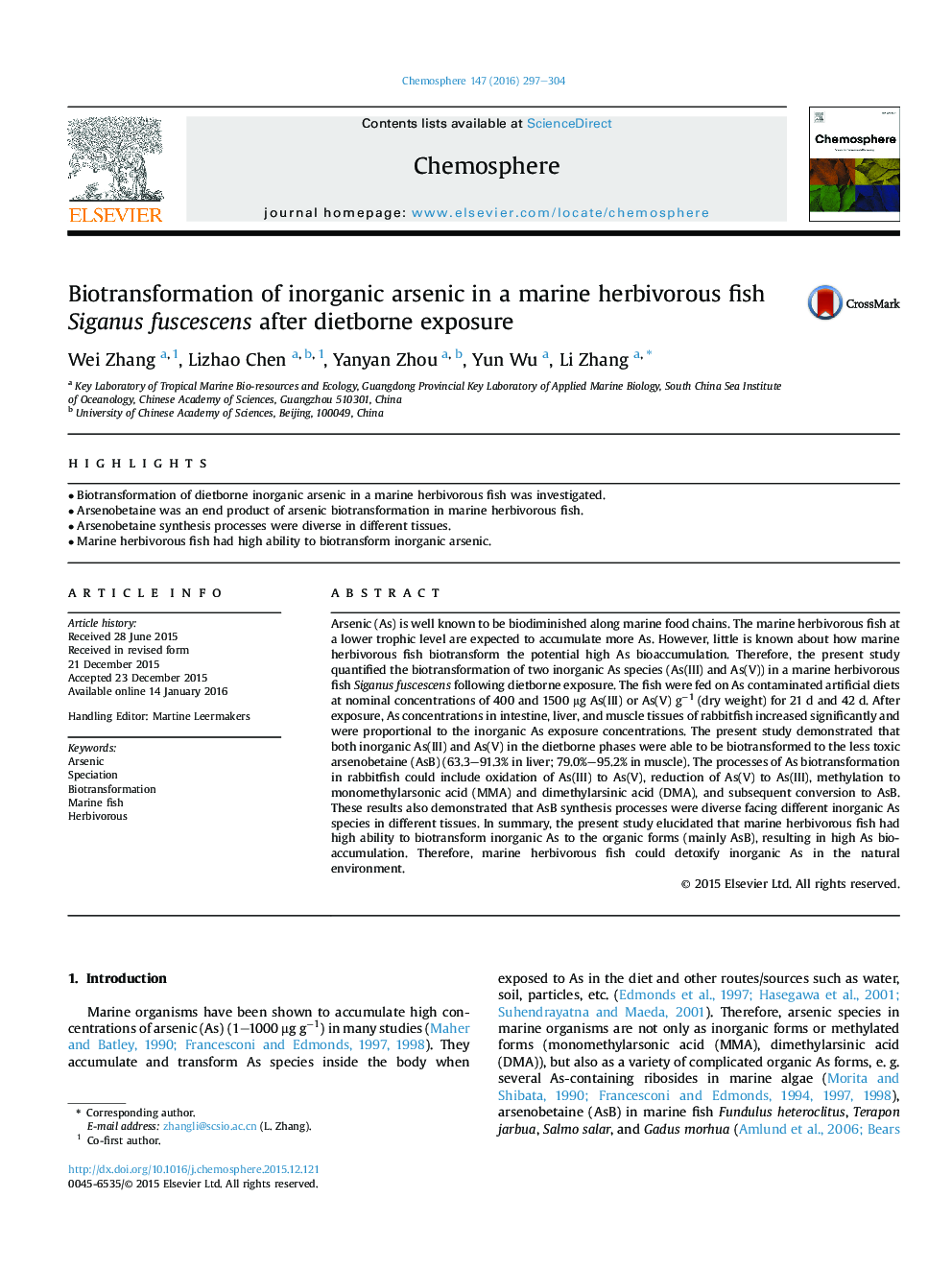| Article ID | Journal | Published Year | Pages | File Type |
|---|---|---|---|---|
| 4408020 | Chemosphere | 2016 | 8 Pages |
•Biotransformation of dietborne inorganic arsenic in a marine herbivorous fish was investigated.•Arsenobetaine was an end product of arsenic biotransformation in marine herbivorous fish.•Arsenobetaine synthesis processes were diverse in different tissues.•Marine herbivorous fish had high ability to biotransform inorganic arsenic.
Arsenic (As) is well known to be biodiminished along marine food chains. The marine herbivorous fish at a lower trophic level are expected to accumulate more As. However, little is known about how marine herbivorous fish biotransform the potential high As bioaccumulation. Therefore, the present study quantified the biotransformation of two inorganic As species (As(III) and As(V)) in a marine herbivorous fish Siganus fuscescens following dietborne exposure. The fish were fed on As contaminated artificial diets at nominal concentrations of 400 and 1500 μg As(III) or As(V) g−1 (dry weight) for 21 d and 42 d. After exposure, As concentrations in intestine, liver, and muscle tissues of rabbitfish increased significantly and were proportional to the inorganic As exposure concentrations. The present study demonstrated that both inorganic As(III) and As(V) in the dietborne phases were able to be biotransformed to the less toxic arsenobetaine (AsB) (63.3–91.3% in liver; 79.0%–95.2% in muscle). The processes of As biotransformation in rabbitfish could include oxidation of As(III) to As(V), reduction of As(V) to As(III), methylation to monomethylarsonic acid (MMA) and dimethylarsinic acid (DMA), and subsequent conversion to AsB. These results also demonstrated that AsB synthesis processes were diverse facing different inorganic As species in different tissues. In summary, the present study elucidated that marine herbivorous fish had high ability to biotransform inorganic As to the organic forms (mainly AsB), resulting in high As bioaccumulation. Therefore, marine herbivorous fish could detoxify inorganic As in the natural environment.
